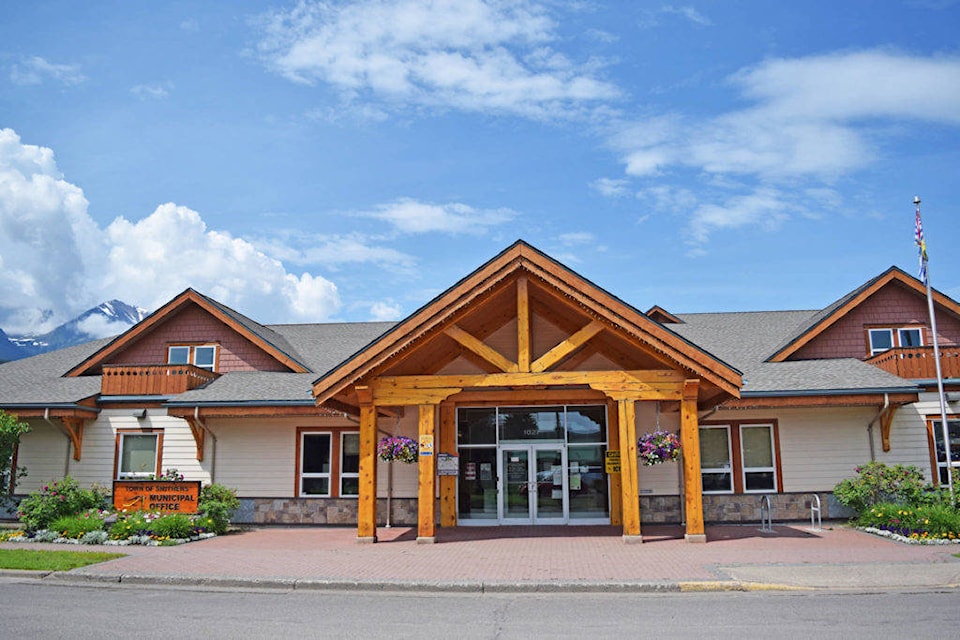If you’ve ever wanted to know how much greenhouse gas (GHG) emissions Smithers produces, now you can.
The Climate Action Revenue Incentive Public Report (CARIP) is an annual report released by the Town and all other signatories of the B.C. Climate Action Charter (CAC).
Each year’s report summarizes actions, both taken and proposed, by various municipalities across the province to reduce corporate and community-wide energy consumption.
The report for 2018, released May 14, shows that the Town produced 490 tonnes of carbon dioxide (tC02e) for the year.
But as a report to council on the Town’s CARIP report for 2018 indicates, that number could very likely increase.
“It is very possible that when the volumes from 2019 paid bills are entered into SMARTtool the 2018 year final GHG emissions may end up becoming more than the current reported 490 tonnes, due to the uneven billing cycles of PNG and BC Hydro,” the report states.
The Town’s GHG totals for 2018 compare to 501 tC02e in 2017 and 465 tC02e in 2016.
But those numbers can be hard to interpret, as Mayor Taylor Bachrach explained in an interview with The Interior News, due to the fact that they can be influenced by seasonal things such as exceptionally cold winters.
“A lot of our emissions come from snow removal and when we have a cold winter or a winter with a lot of snow like we did a couple of years ago we burn a lot more diesel,” Bachrach noted.
“With a cold winter also comes a greater use of natural gas for heating buildings and so our emissions reflect that.”
CARIP also gives towns a chance to report on how they’ve balanced out GHG emissions from a variety of options, such as energy-efficient retrofits, low-emission vehicles and purchasing carbon offsets.
As Bachrach explained, the Town does budget to place a carbon offset equivalent into their Greenhouse Gas Emission Reduction Reserve (GGERR) reflecting their yearly GHG consumption.
The GGERR was adopted by council in 2013 as a way of paying a carbon offset equivalent but still keeping money within the community.
It is used to fund local projects that reduce GHG emissions or paying for carbon offsets.
“A lot of communities — especially smaller, northern communities — didn’t like the idea of purchasing offsets because that’s money that typically leaves the local economy and so what we did as an alternative is we created a statutory reserve within [the Town’s] financial system and we charge ourselves an amount per tonne each year.
“We’re sort of … taxing ourself and then we’re using that money to fund projects that further reduce our emissions.”
The report also outlines various efforts toward reducing GHG emissions the Town has taken during the year and actions that have been proposed for 2019.
One example is the Town’s Active Transportation Plan, aimed toward making the community more livable within the context of active transportation (walking, biking or other non-motorized forms of transportation).
Bachrach also pointed to where the Town’s emissions are coming from.
In 2004, just under 37 per cent of the Town’s GHG emissions came from its fleet and just over 63 per cent came from building, lighting, waste and wastewater emissions within its boundaries.
By 2018 those figures had reversed, with 63 per cent of emissions coming from the Town’s fleet and 37 per cent from building, lighting, waste and wastewater emissions.
This is, in part, due to many initiatives the Town has undertaken to build or retrofit projects with energy efficiency in mind.
On example is a 19-unit affordable housing project finished in 2018 to the Passive House standard, which refers to buildings that consume up to 90 per cent less energy than conventional designs.
And while they might not run on compost like the Doc’s DeLorean in Back To The Future II, Bachrach said another initiative the Town is looking at is transitioning its fleet to electric vehicles sooner rather than later.
“When it comes to the Town fleet we do have a number of vehicles [that] could be replaced with electric options,” said Bachrach, adding that the Town has asked staff to put together an assessment providing council with information on specific vehicles within their fleet that might be good candidates for replacement.
“We’re hoping to have that discussion as part of the 2020 budget process [beginning] this fall.”
The Town has also begun a study on the feasibility of a heat reclaim system between its ice rink and the Regional District Pool to increase energy efficiency between the two facilities.
In its 2018 CARIP report Smithers identified reduced snowpack from warm winter temperatures, increased wildfire risks from increased temperatures and extreme weather events contributing to urban and overland flooding as the three climate impacts that are most relevant to the Bulkley Valley.
As a signatory of the CAC, the Town receives a cheque from the Province in the amount of carbon tax paid over the course of the year, an incentive of sorts for signing onto the above charter.
The CAC commits signed municipalities to tracking and reporting GHG emissions, becoming carbon neutral and creating low carbon communities.
Earlier this month in a 4-3 vote the Town passed a motion to make a declaration of a climate emergency.
Councillors Lorne Benson, John Buikema and Frank Wray were opposed to the motion.
